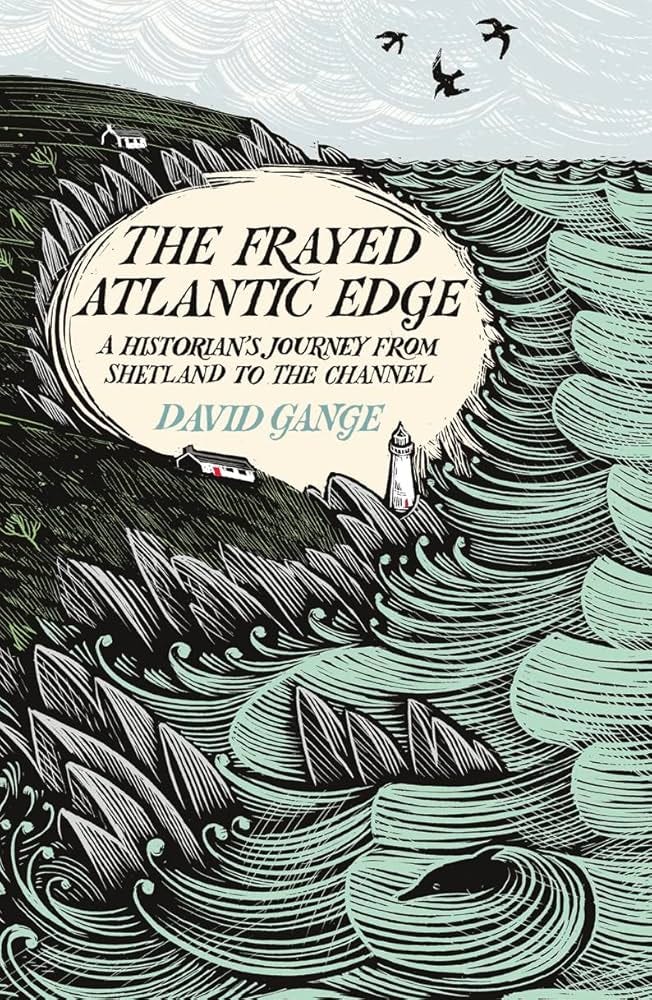Book Review: The Frayed Atlantic Edge
Naomi Andersson writes a review of one of her recent reads and its application to numerous A Level topics
The Frayed Atlantic Edge by David Lange
Blackwells Link: https://blackwells.co.uk/bookshop/product/The-Frayed-Atlantic-Edge-by-David-Gange/9780008225148
This book was recommended by my colleague Eira Richards, a classroom Art Teacher, SEN learning support and published Graphic Artist specialising in Hebridean Manga. She has been helping me in the classroom with a very large year 12 A Level cohort with a number of SEN students and through our lessons has exchanged an enormous wealth of cultural knowledge, for which I am very grateful.
David Gange paddles his kayak from Shetland to Cornwall, in a series of stages, and through his journey, we learn about the precarious and endangered languages, the mythologies, stories and the historic challenges for humans along these coasts.
Kayaking the west coasts of Shetland, Orkney, Scotland, Ireland, Wales and Cornwall, all the while questioning inland versus coastal narratives of history, particularly the abuses of island and coastal communities through colonialism, centralised nationalism and the exploitation through harvesting resources.
David brings to life the sounds and smells of the ocean, geology, landscape, wildlife and culture of coasts. He shares his research and references for film, visual arts, poetry and crafts linked to these diverse coastlines. We learn these coasts and ‘seaways’ were globalised centuries before inland regions. I found myself googling Turner artworks of Skye and watching Netflix The Outrun, his writing gently encourages curiosity and questioning.
This book brings a new dimension to the teaching of ‘place’ . I found it inspiring to think on hyper local societies and I believe it will enhance my teaching of place, particularly informal representations of place, place meaning, connectivity and interdependencies within and between places. For example the links between the Iberian peninsula and South West Ireland, Brittany and Cornwall, Scotland and Ireland.
In addition, we learn the diversity of the coastline, from the seemingly uninhabited to the teeming with tourists, the openness vs closed approaches to visitors, the optimism and joy to be found in simple, scientific and sensitive interactions versus impositions of education, land use and language from central government.
While exploring the West Coast of Ireland we learn the challenges faced on the Island of Ennis, where in the 2010s, Shell lost its hard fought battle to access oil resources, to the detriment of the environment, the communities and the economy. The islanders were supported by the Ogoni people of Nigeria, yet another interdependence, presenting evidence of the risks of allowing a TNC with such a reputation to operate freely and without redress on a fragile coastline. This new learning for me will be applied to my teaching of attitudes, TNCs, Capitalism, Carbon, Globalisation and Global Power and Borders.
Another fascination for me with this book was the discourse around mapping, the recording of land and sea, where maritime charts ignore beyond the strand line and land mapping with its roots in British Army survey ends. I did my own investigation and he is right, the more recent digital mapping from OS Mastermap records Mean High and Mean Low Water lines in the topography layer, but only records human built features (walls, built obstructions, fixed structures, lock gates) or intertidal water features. Therefore leaving this uncharted hinterland of islands, strands, coves etc relatively uncharted. So these ancient sea ways as paths along our coasts are to a large extent formally unmapped, navigating those tidal streams and currents, narrow channels between inhospitable or remote rocks and islands are out of reach to many, the reading of swells requires copious local knowledge and advice. Its refreshing to know some places remain wild and safe from us all. David Gange is now best placed to develop his seaways in perhaps similar vein to Dan Raven-Ellison’s Slow Ways.




